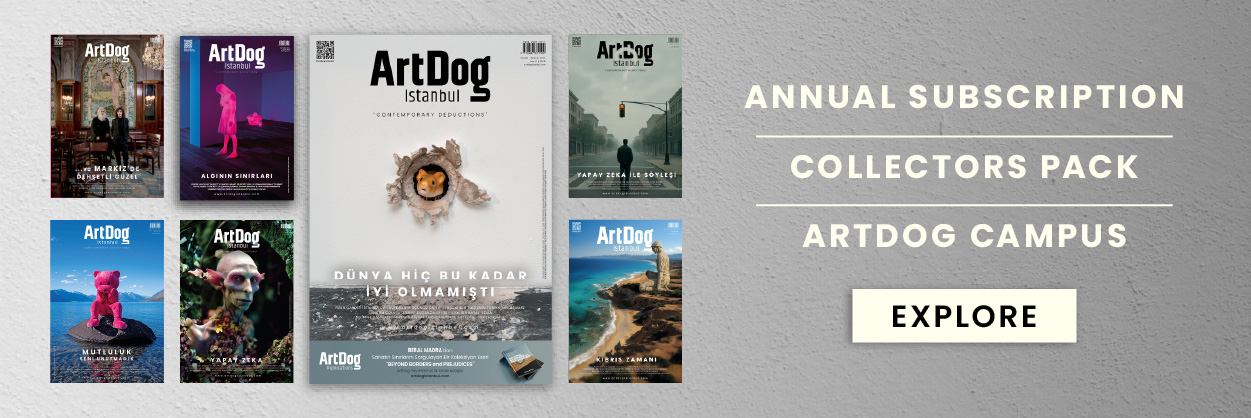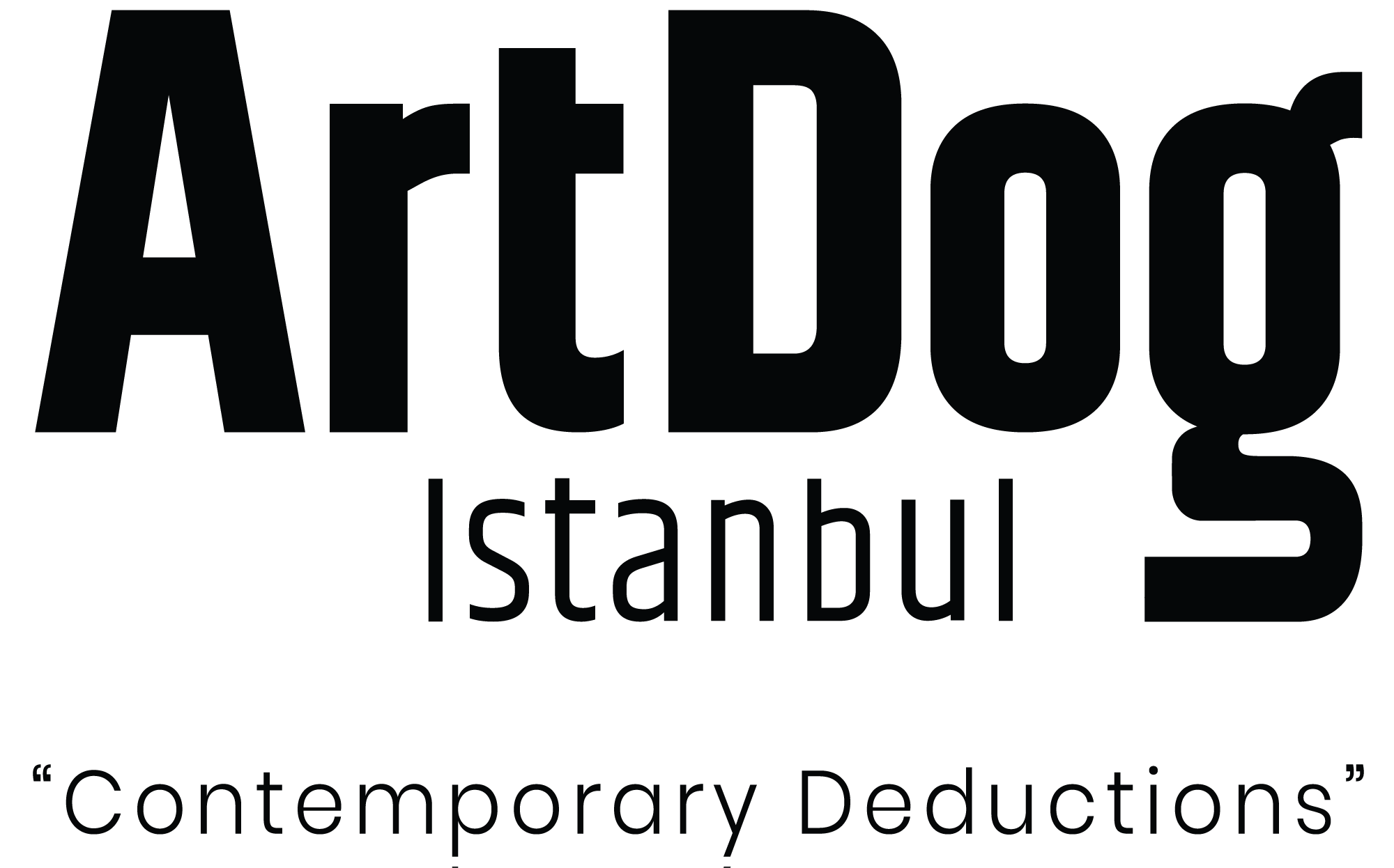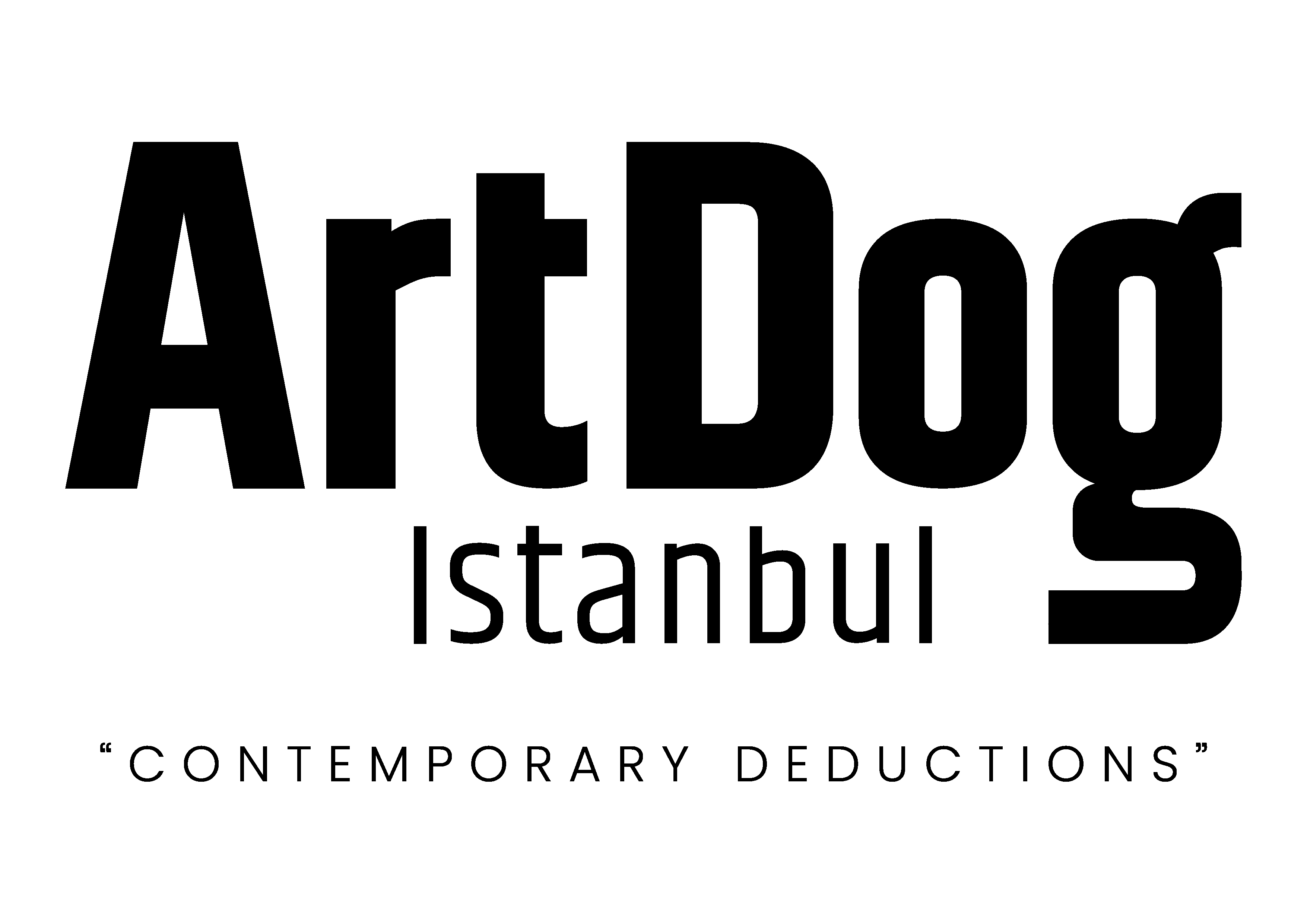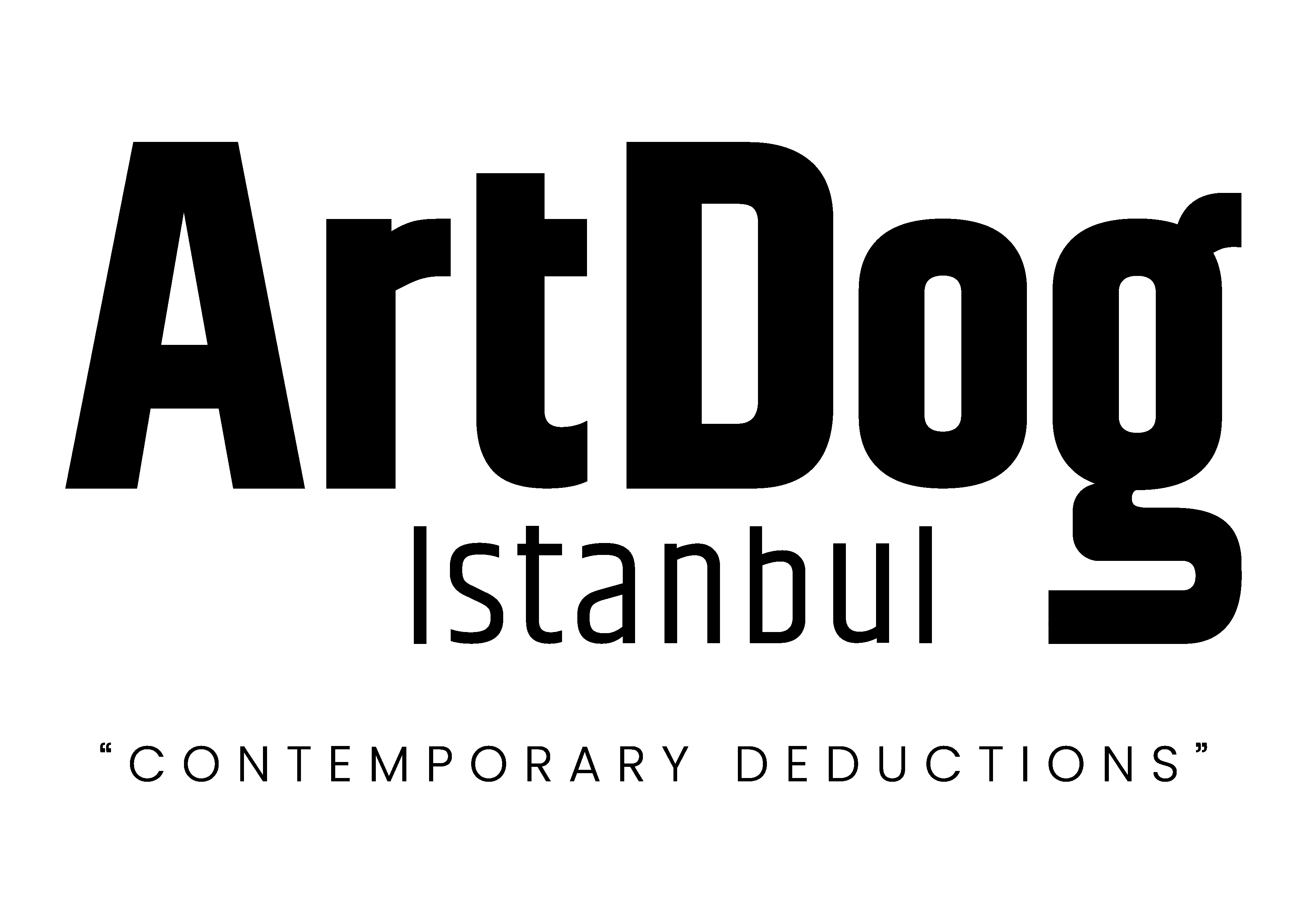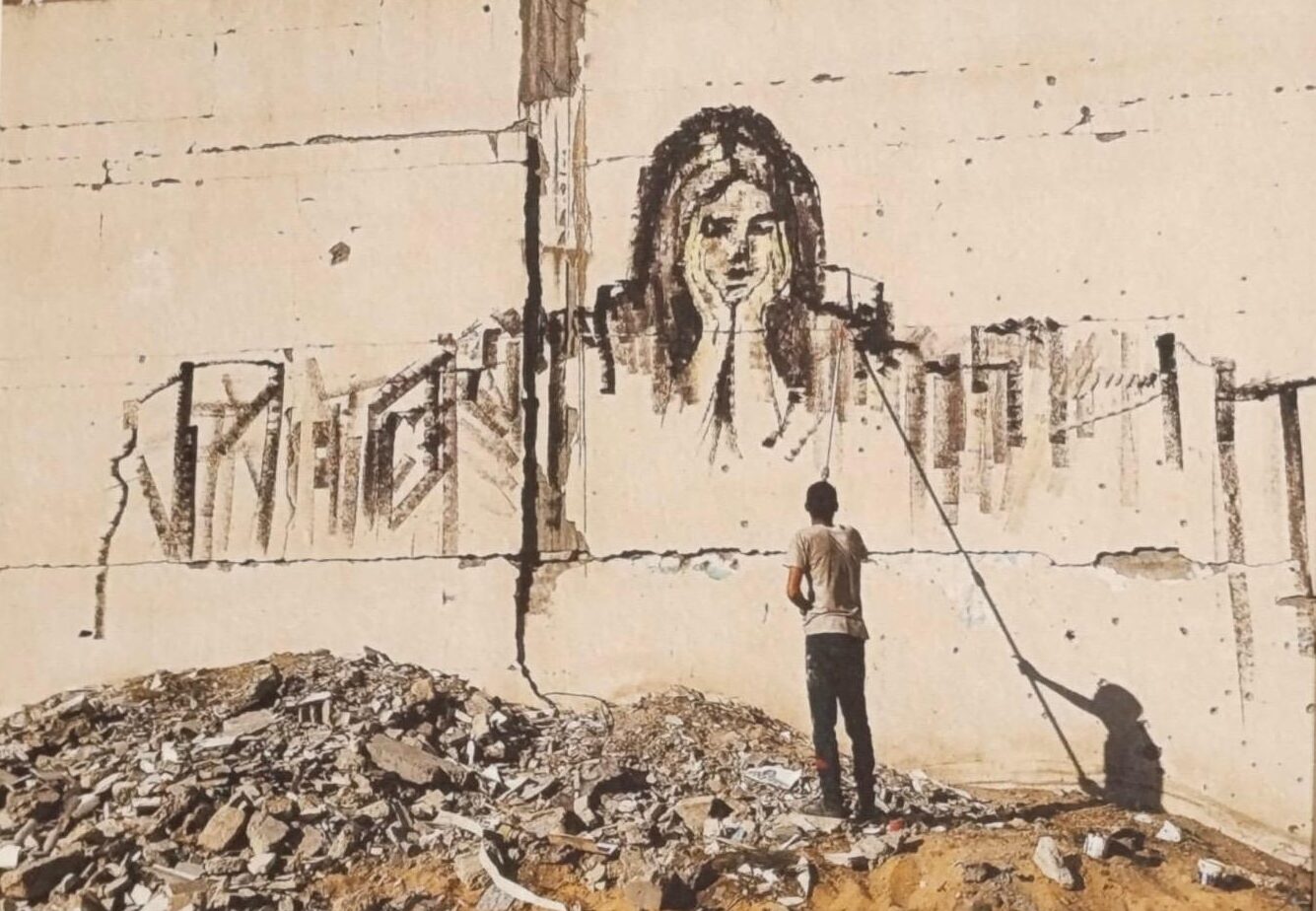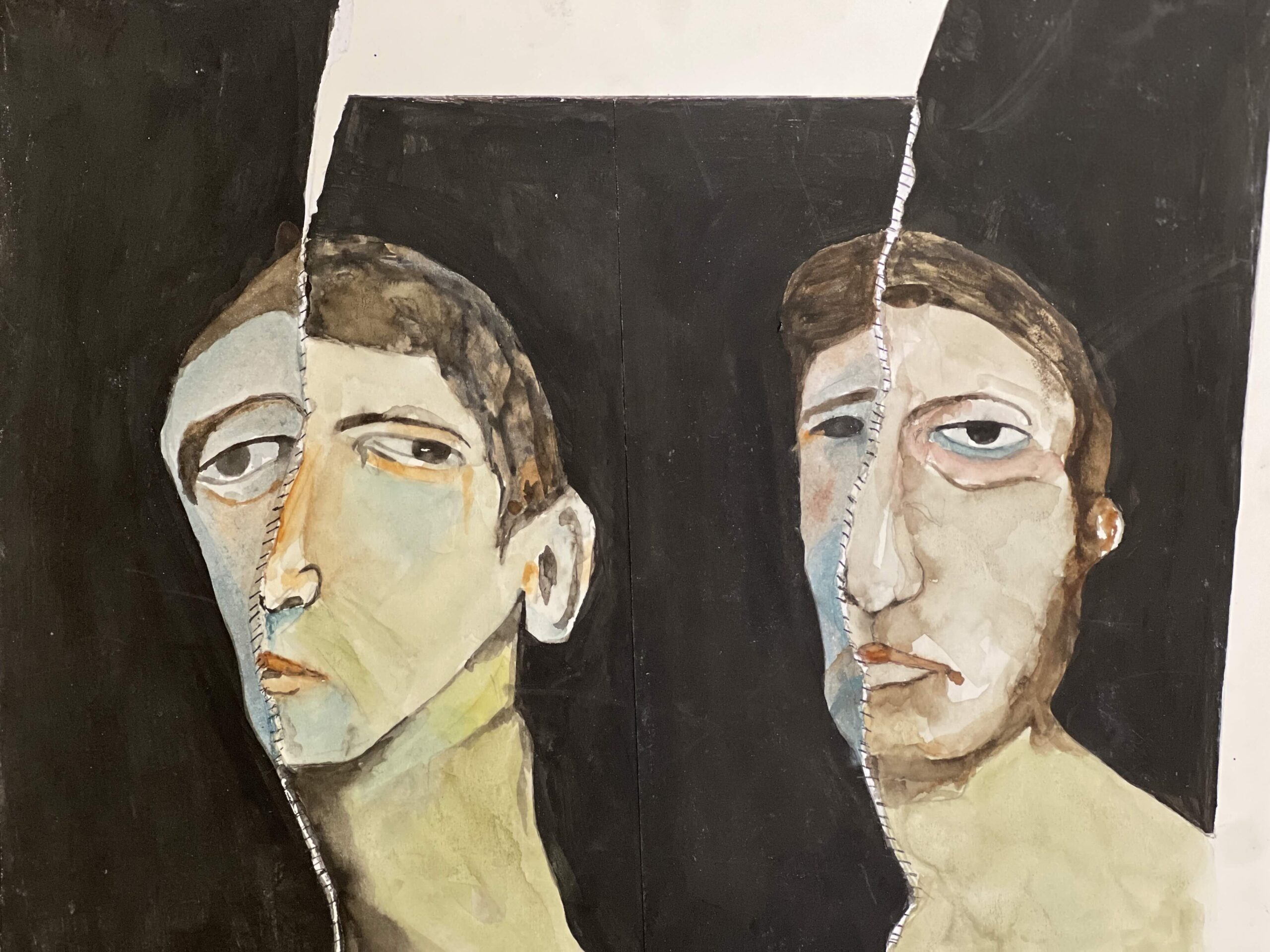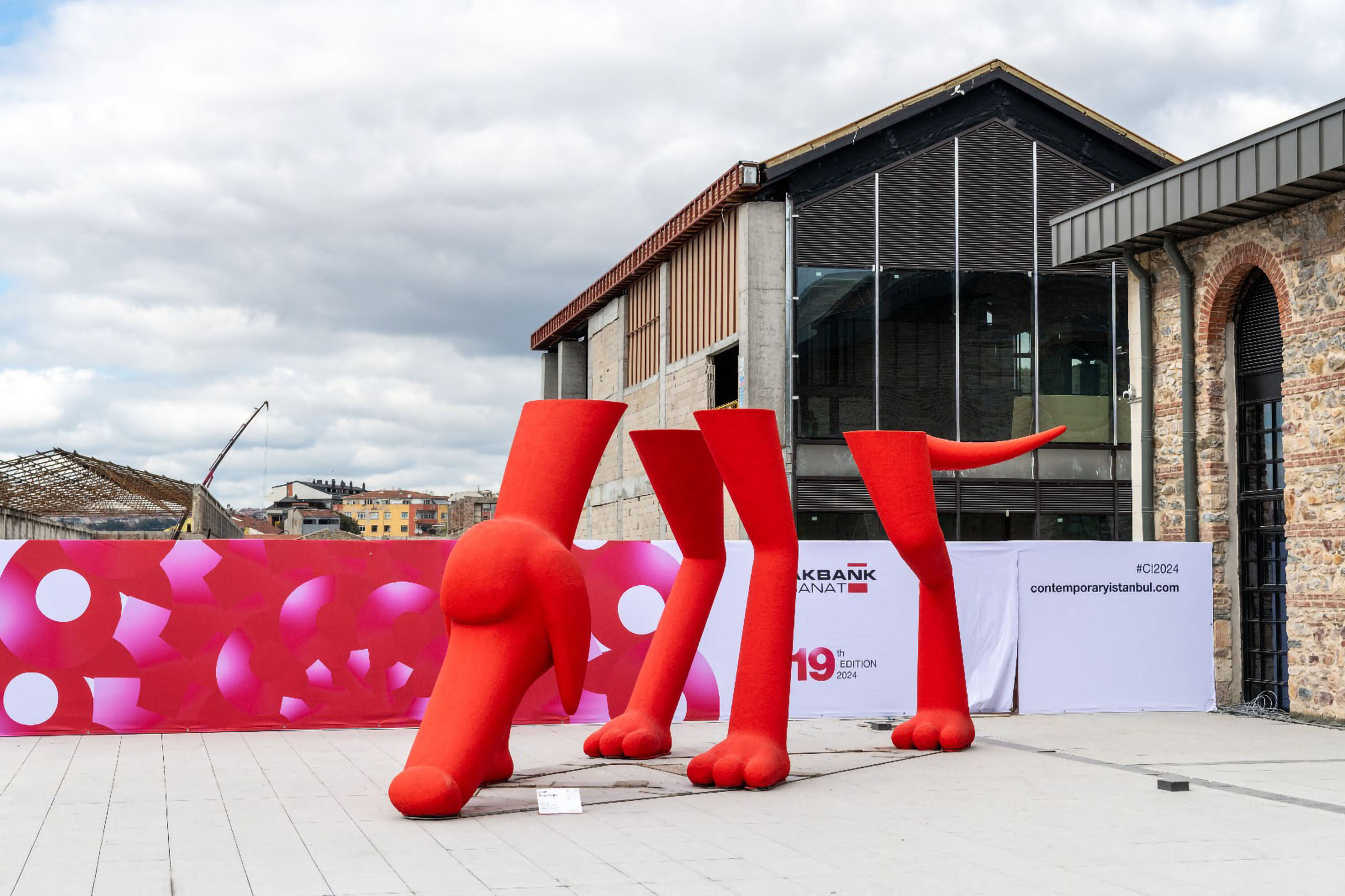The opening of the Gaza Biennial Istanbul Pavilion at Depo Istanbul held added significance due to a live connection established with Gaza, which included participation from approximately 50 international and Palestinian artists. During the event, a message of solidarity from Osman Kavala was read aloud, receiving applause from the audience. The exhibition will be on view until November 8 and offers free admission. It features a diverse array of artworks, including photography, sculpture, painting, and video installations. Located in Istanbul’s Tophane district, Depo is situated in a four-story former tobacco warehouse and has served as an exhibition and project space since the 9th International Istanbul Biennial in 2005. It opened its doors for the Gaza Biennial on Friday evening, September 19, and will continue to host the event until November 8.
The Gaza Biennial Istanbul Pavilion, titled “A Cloud in My Hand,” coincided with the 18th Biennial and opened across two floors of Depo. The event featured a series of activities and attracted nearly 500 attendees, creating a lively atmosphere of engagement.
The exhibition consists of 13 distinct wall sections, showcasing works by numerous artists involved in the Gaza Biennial Initiative. All artworks will be on display until November 8.’s official statement, the Gaza Biennial began in 2024 as an act of artistic resistance on a besieged beach in collaboration with Palestinian artists and the Forbidden Museum of Jabal Al Risan in Palestine. Since then, it has expanded through diasporic acts of solidarity hosted by art institutions worldwide, establishing Gaza Biennial Pavilions as transnational practices of artistic affinity and alliance that move beyond national representations.
The biennial opened with an emotional speech by Almut Shulamit Bruckstein Çoruh, the founder of the House of Taswir, on the evening of September 19 at Depo. Throughout the event, live online connections were established with artists across various parts of Palestine who are victims of genocide but contributed their works to the biennial. Their messages, often interrupted by applause, resonated strongly with the audience. The live connections included participants such as Motaz Naim, Tasneem Tareq, and Ibrahim Alsulta from Gaza and Khan Younis.
Curated by House of Taswir and its project partners, the Gaza Biennial also features collaborations with the Addar Center in Istanbul and the Forbidden Museum of Jabal Al Risan in Ramallah, showcasing the works of over 50 artists from Gaza, Palestine, and other diverse regions..
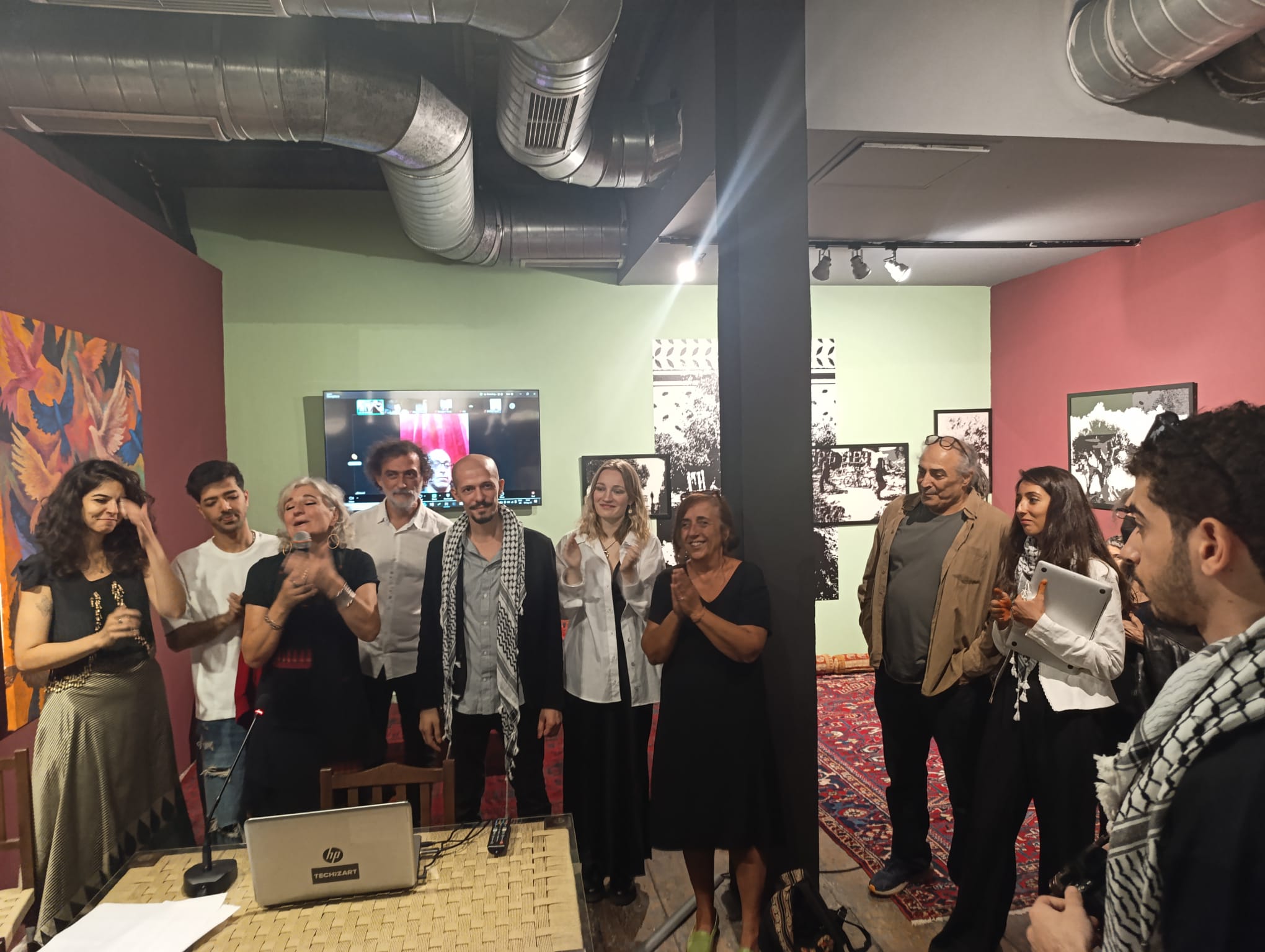
Message from Anadolu Kültür Director Günal on Behalf of Kavala
At the opening of the A Cloud in My Hand exhibition, Asena Günal, Director of Anadolu Kültür, which Depo is affiliated with, also gave a speech. In her remarks, Günal shared with the audience a brief message from Osman Kavala—founder of Depo and Anadolu Kültür—who has been imprisoned for years, and summarized it as follows:
“We are living in a time when the world has not only witnessed but in some ways become complicit in a genocide that has been ongoing for nearly two years. In such times, to focus on Gaza and insist on continuing to speak about Gaza is the only way to resist this complicity.
This biennial, too, is a way of persistently talking about Gaza, at a moment when Gaza is under occupation and the UN has officially recognized the genocide. As Depo, we are proud to host this biennial and deeply thank everyone who contributed.
Osman Kavala, the founder of Anadolu Kültür and Depo (depoistanbul.net), has been unjustly imprisoned for eight years. He is following this issue closely. We asked him for a note to share at this opening, and I would now like to read it to you:
*Dear artist friends, dear guests… The fact that the atrocities in Gaza continue to escalate, and that nothing is being done to stop them, pains all our hearts. It makes us ashamed of our humanity. Those working in the field of culture have very limited power to directly influence politics. Yet they play a leading role in protecting human values and reflecting them in the most genuine way.
In response, strong voices are rising from the streets and from the world of culture and art. Hosting those who join this chorus of humanity is a great honor for us. We hold on to our hope that evil will be defeated. Thank you, with greetings and affection.*”
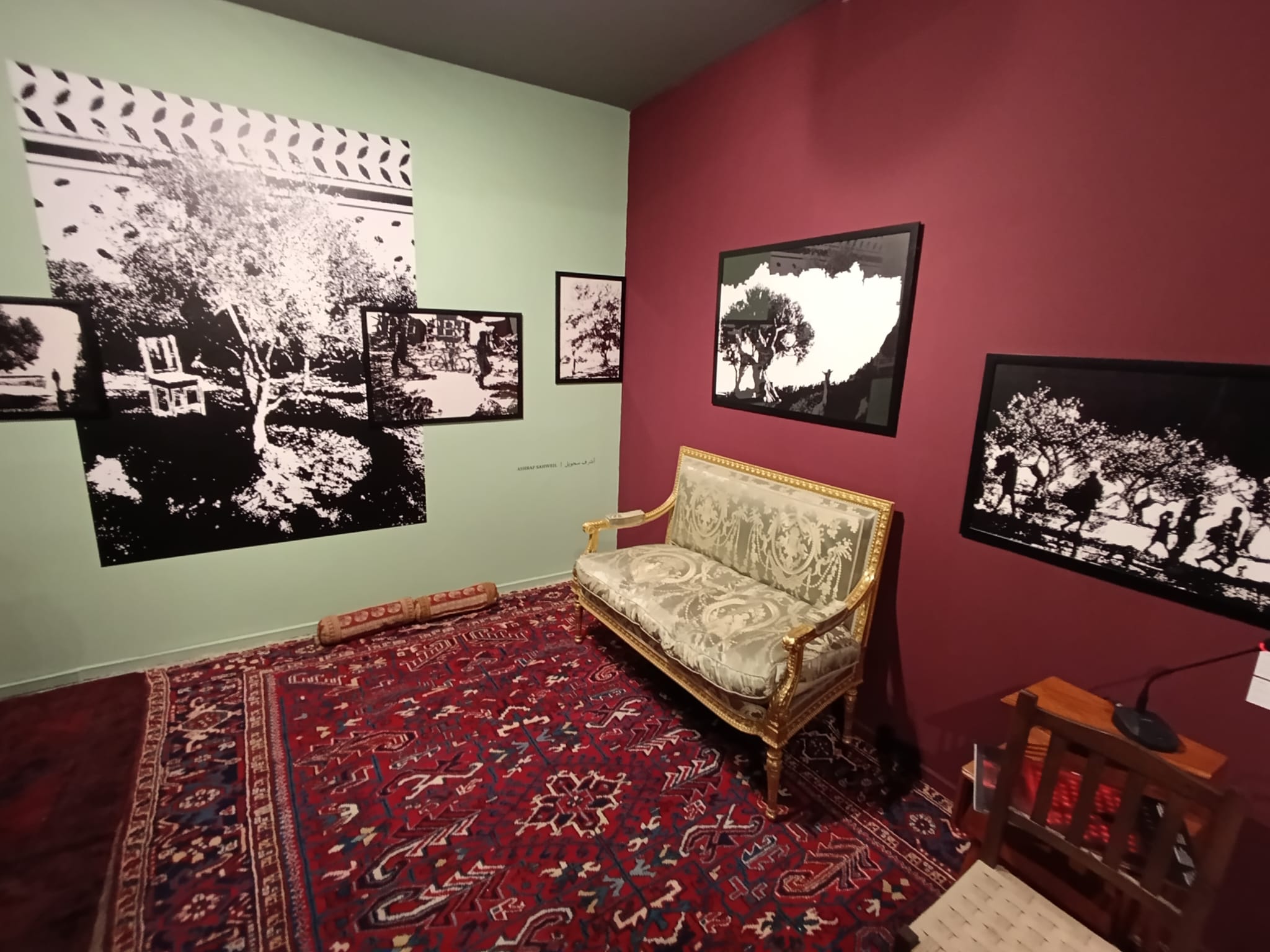
Emotional Words from Curator Bruckstein
Later at the opening, speaking before the Biennial’s Face-to-Face wall and the live screen installation, Almut Shulamit Bruckstein Çoruh—founder of the House of Taswir (taswir.org) initiative and curator—delivered a presentation enriched with Arabic and English translation. Addressing the Gazan artists who joined online, she said in summary:
“Dear artists of the Gaza Biennial… We miss you deeply, and we thank you. But this gratitude is not limited to our efforts to bring your unique artworks to Istanbul. We are grateful because each of you serves as a mirror: with your courage and resilience, with your creativity and your insistence on continuing to create, you resist the unbearable. And in doing so, in the very midst of a merciless death machine that cuts through bodies, hearts, and souls, you continue to endure.”
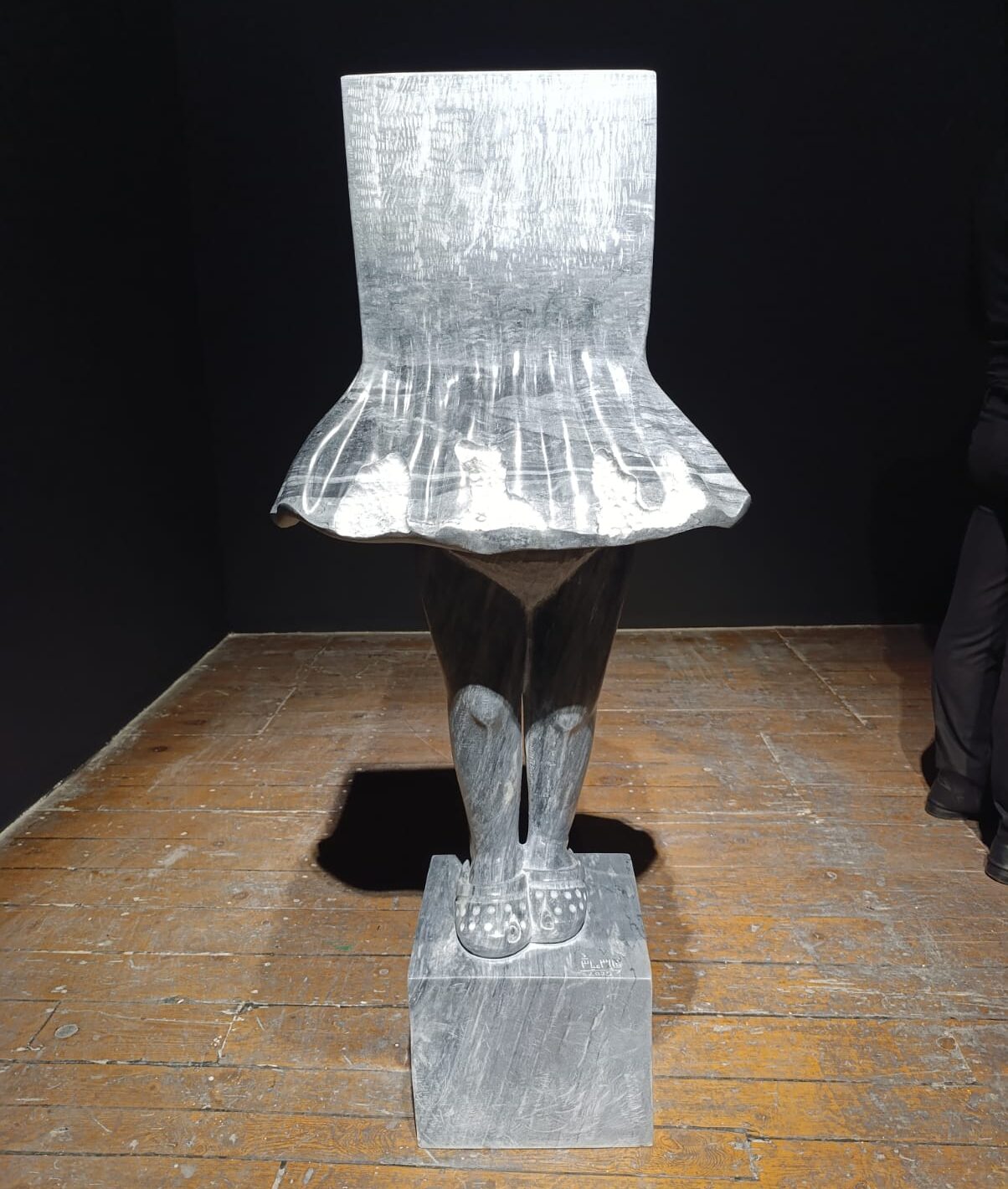
The Voices of Palestinian Artists Rose in Istanbul
At the opening, young Palestinian artist Tasneem Tareq delivered a thank-you speech—translated from Arabic into English—in which she expressed the following:
“Letters and words branched out, multiplied. We are all telling different stories. We are documenting the truth in many forms and ways. Yet all of them—whether writing, literature, performance, or art—merge with the passions that life has given us. More than 50 artists. People with souls who reach for the sky with their children, their families, their partners, their loved ones. People searching for themselves, left alone with the destructive power of displacement. People marked by the devastating impact of history, who have lost their ordinary lives, now at war. A war in which every day has become a struggle even for a single morsel of bread. Like a burned-out oil market, they stand in endless lines, with every trace scorched. Children’s needs go unmet, their thirst for water unquenched; parents return empty-handed. They are on the brink of losing their minds, their very beings.
“So how will they paint the picture of truth? Beneath the sky, before their hungry infants, how will that be possible? How will they draw the shrapnel flying around them? When their canvases are torn and burned, when their homes and studios are destroyed, how will it be possible? Who, without even a single pen, a brush, or paint, can render all this?
“What can be said about the artworks that emerge from a besieged, starved, annihilated Gaza? This is the expression of the impossible. At first it was just a small group, who dedicated themselves to humanity, to justice, to their cause. To organize an international biennial for Gaza, to succeed in doing so, and to do it at this very moment—what could that mean? It means our power surpasses imagination. It means that the purest hearts carry the clearest visions. It means that what emerges is a visual epic, in which the Palestinian story is told with all its pride, needing no disguise or embellishment.
“Today we are opening the International Istanbul Pavilion of the Gaza Biennial. Gazan artists are raising their voices here. We applaud with life, love, and hope. History will undoubtedly mark this act—this cultural act of meaning. The joined wills and hands here are those of belief in justice, of faith in the power of art to move the world.
“We thank everyone who has not left us alone from Gaza. We thank all who struggle for humanity and morality. Art, and the freedom it embodies, now stands above all reckonings. We thank the Gazan artists for their struggle against every obstacle that brought us to this point. We demonstrate this through Gaza Biennials across the world. We thank all who believe, who support us in solidarity and companionship.
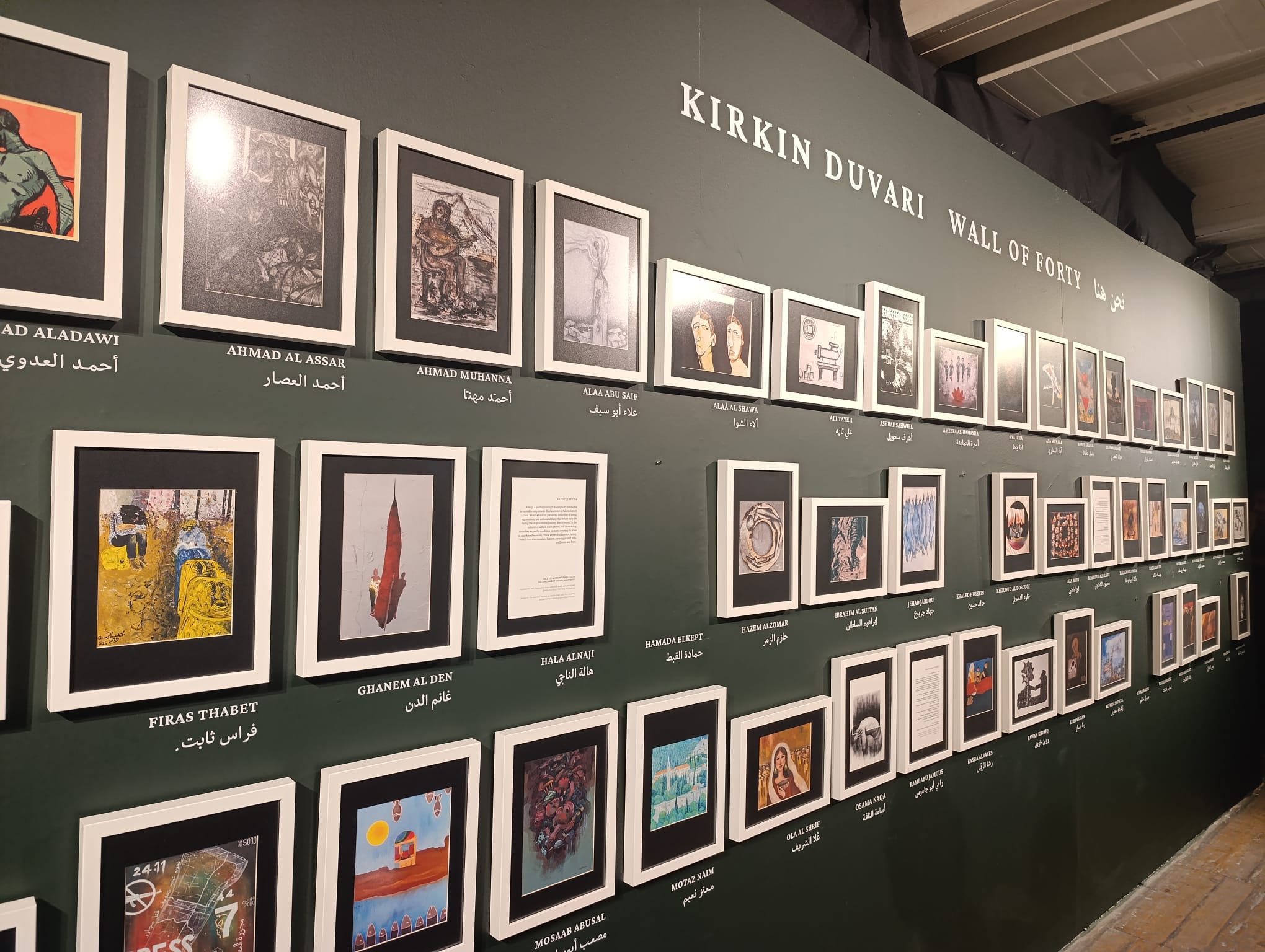
“We also send our love to everyone participating in the Gaza Biennial and to every member of the team, as well as to the curator of the Istanbul Pavilion, for helping realize this vision and bring these works from Gaza to the world through Istanbul.
“And our deepest gratitude goes to everyone here, for each role they have taken on. They stood with us in our moral and human cause. Humanity will be liberated through art. From the heart of Gaza, we send our wish for peace to all free people.”
“They will draw their colors from the bitterness they drink. From the ashes of the fires they light to cook, from the coffee grounds they can no longer afford, they will create. What is happening is tragedy at its peak. It is madness itself. You throw your home, your child, your loved one into the fire; then you return and try to make something that is barely recognizable. You no longer find anything familiar in winter, because time no longer belongs to you. Even the air you breathe is no longer yours.
“And yet, in the face of all this, Gazan artists continue, donning the dignity of their art as their honor. No matter how harsh the materials or forms they must use, they persist. For they know the fragility contained in their work, the pain, and the twisted paths of meaning within a single color or a single line.”
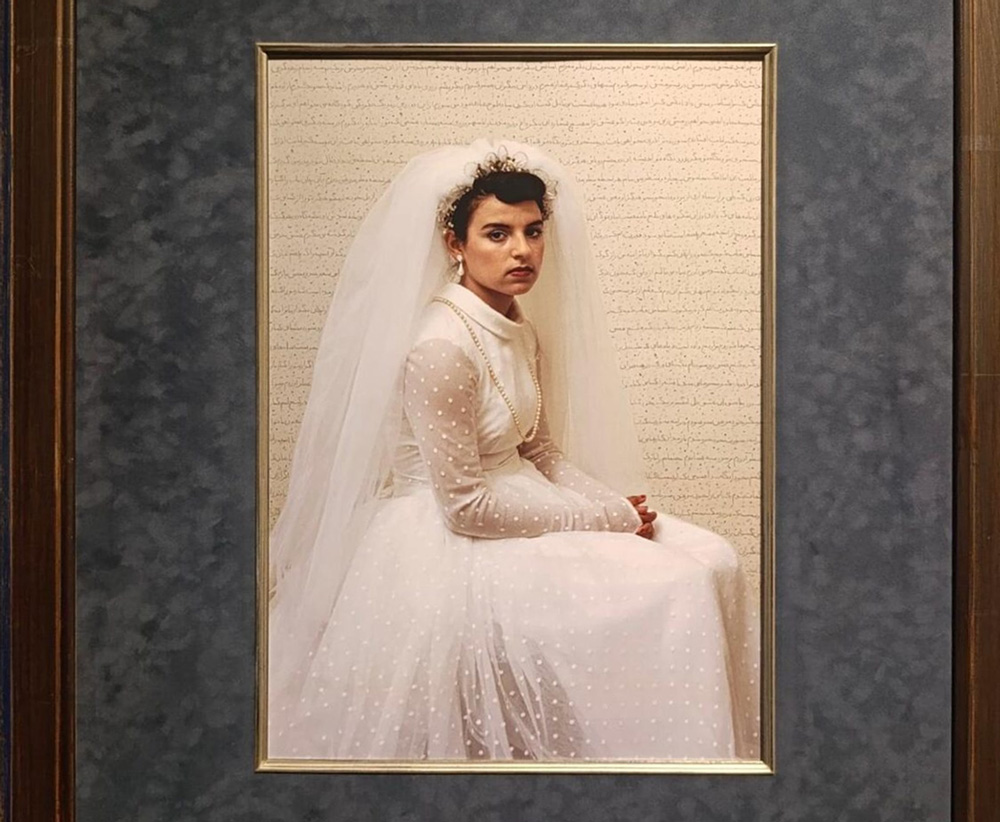
First Impressions from the Exhibition: Every Work a Companion of Resistance
At the opening of the Gaza Biennial Istanbul Pavilion, many also looked for Christine Tohme—the Lebanese curator of İKSV’s Three-Legged Cat Biennial, which this year made a meaningful gesture by including Palestinian artists. The exhibition drew numerous artists, curators, publishers, translators, and allies of Palestine from Turkey. Works were presented under titles such as The House of Names, The Festival of Gratitude, The Wall of Forty, The Museum of Proximities and Distant Solidarities, Face to Face, Lost in Translation, The Collector’s Corner, The Wall of Those Who Wait, Soon, The Device of the Scribes, The Palestinian Agency, The Table of Thinkers, and The Tokens of Faith.
Among the sections, Posters and The Wall of Forty especially stood out, sparking discussion and interest for their originality in representing the region. While all the works were of equal and unconditional value, many pieces came vividly before the audience.
Every work stood as a companion to resistance against genocide. On the first floor, vast black-and-white wall collages by Muhammad Alhaj and Furkan Akhan were presented, accompanied by the verses of the Palestinian poet Mahmoud Darwish. Juxtaposed with lines from Darwish’s The Horse Fell Off the Poem—“The horse fell bloodied / along with my poem / and I too fell, bloodied / with the horse’s blood…”—the monumental collage evoked Picasso’s Guernica, the great anti-fascist abstraction of modern art. Within the composition appeared figures of Intifada (Uprising) members and elements like the Al-Aqsa Mosque, while themes of destruction, life, migration, cultural heritage, livelihood, ecology, memory, and hope intertwined seamlessly with a vision of freedom.
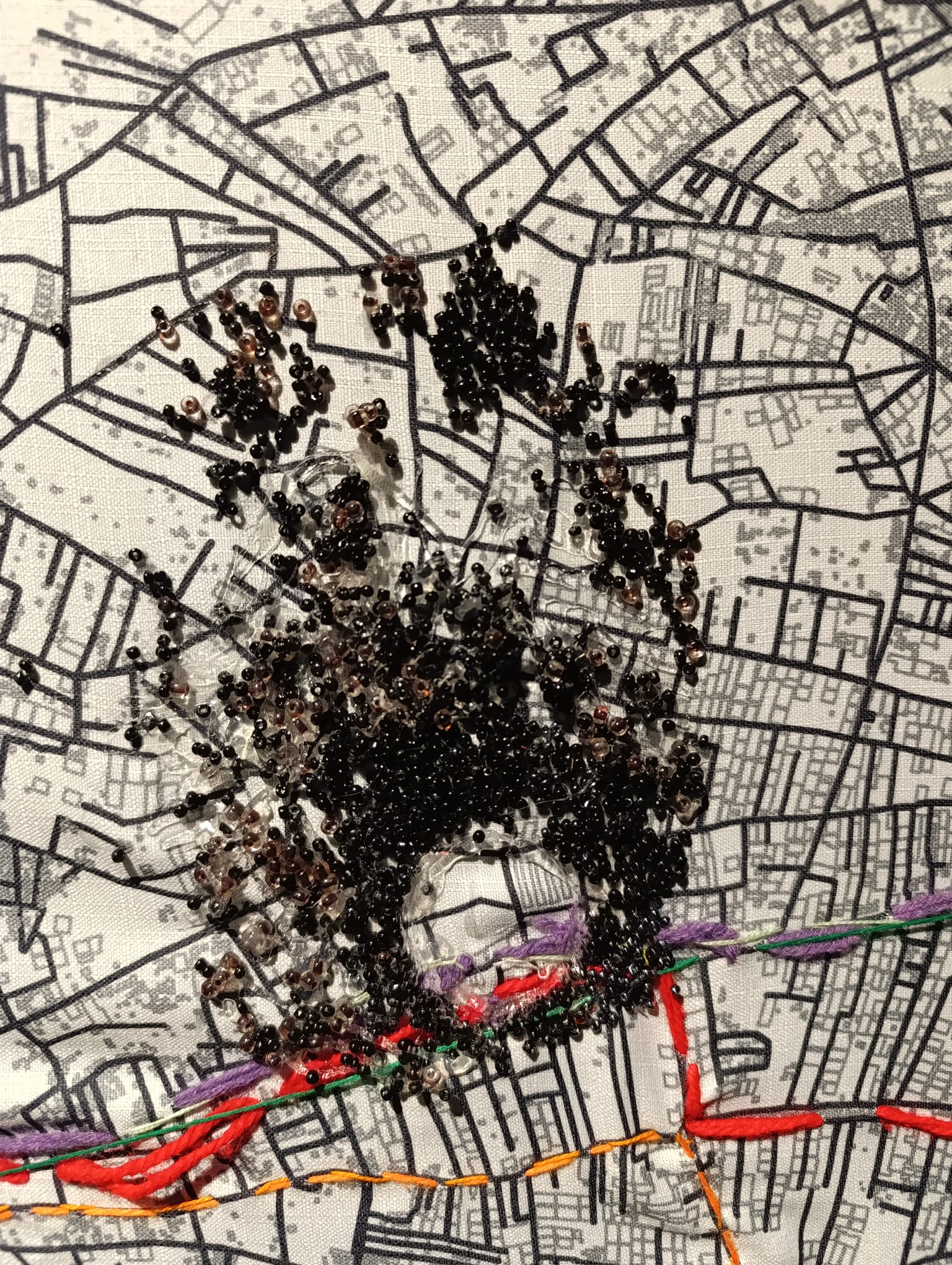
Everyone Is Talking About Yasmeen Al Daya’s Icon of Humanity
Without a doubt, Yasmeen Al Daya’s haunting abstract figure—rendered in the spirit of sand and dust and immortalized as the biennial’s poster—emerges as a contemporary icon. It embodies the mask of life and death, confronts us with helpless witnessing, and weaves together guilt, justice, innocence, and humanity.
Also under the House of Names wall section, the exhibition commemorates those who inscribed their labor and solidarity into the event. Within the same section’s Festival of Gratitude, one encounters signatures of artists such as Shirin Neshat, Alfredo Jaar, Eyal Weizman / Forensic Architecture, Walid Raad, Angela Harutunyan, Michael Barenboim, and Kenize Mourad.
Another installation on the biennial’s first floor that deserves highlighting comes from Ghanem Al Den. In his spare yet striking work You Are the Mirror, the artist collides illusion and truth by juxtaposing the silhouette of a rocket with the image of a carrot. Using two opposing mirrors, the piece drops the viewer into a critical moment of reckoning, caught between reality and mental deception.
In this piercing, optical yet disarmingly naïve work—one that entangles perception, conscience, and memory like a test of humanity—Al Den offers the visitor a poetic summons:
“To see yourself – for in essence / you are a mirror / You could be a rocket, or a carrot, or / perhaps both at once, and in every case, the target is you. / The rocket and the carrot are the defining elements of the stage. Still, you will find yourself amid the scattered fragments of the rocket, lured by the grand carrot offered to silence you in times of violence…”
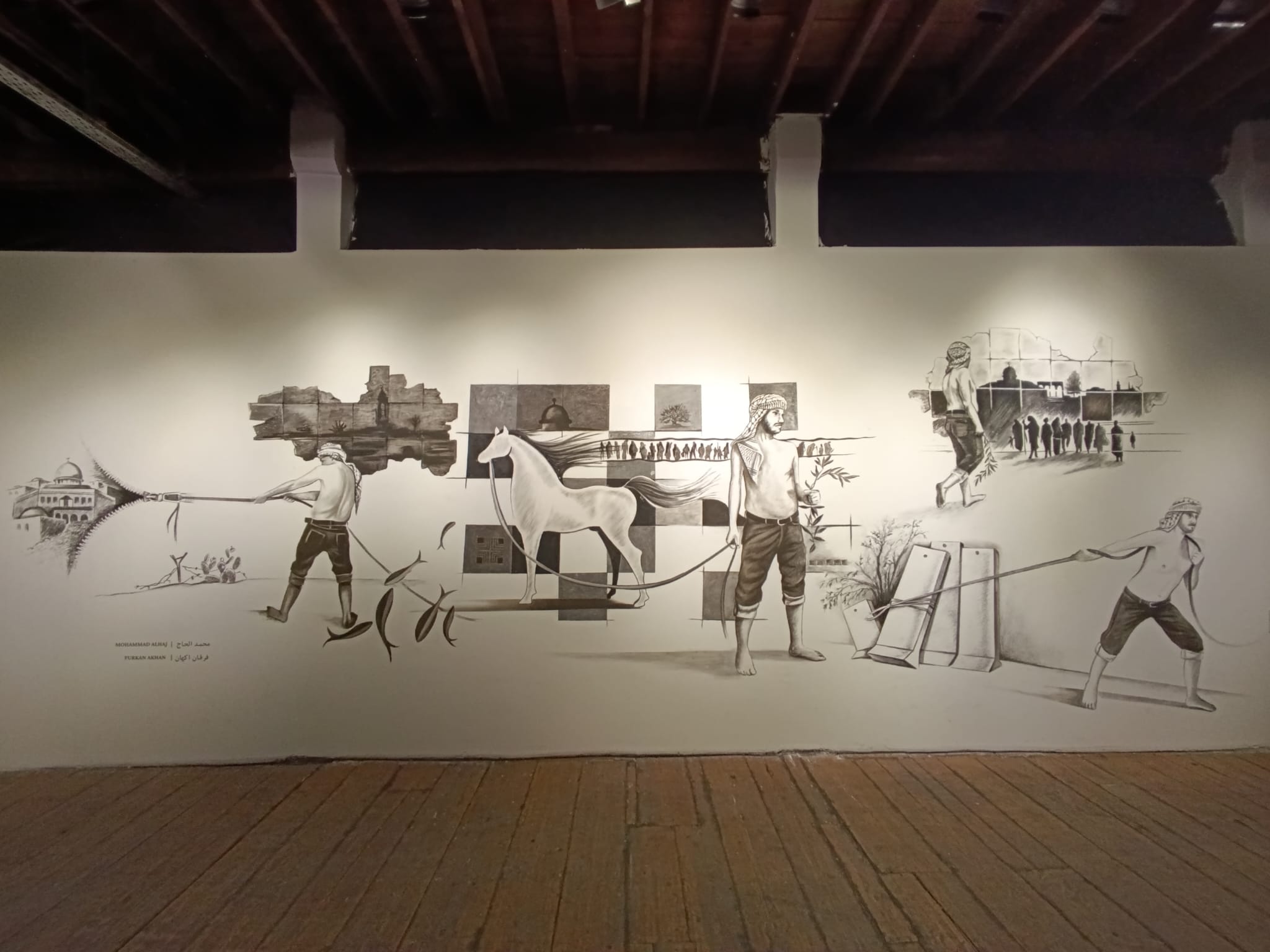
Mohanad Al Sayes, “I Still Remember” Through Graphics and Numbers
One of the key turning points referenced by the biennial is the fate of journalists in the region—those who claimed the truth and shared it with the world, often at the cost of their lives. In this sense, the exhibition also gestures toward the genocide victims who have been reduced to mere statistical figures. With his acrylic on canvas work I Still Remember, artist Mohanad Al Sayes sends an open graphic letter to the world in defense of freedom for Palestine and the right to live.
Elsewhere in the exhibition, Basel Zaraa poses the question: “What will we do when there is no exile?” His installation of tents, trees, and assorted objects in Tophane creates an atmosphere that leaves the viewer suspended between joining a camp or standing apart. The work, dramatized through symbols of soil, olives, and lemons, deepens its impact not only through its visual simplicity but also through the gravity of its call.
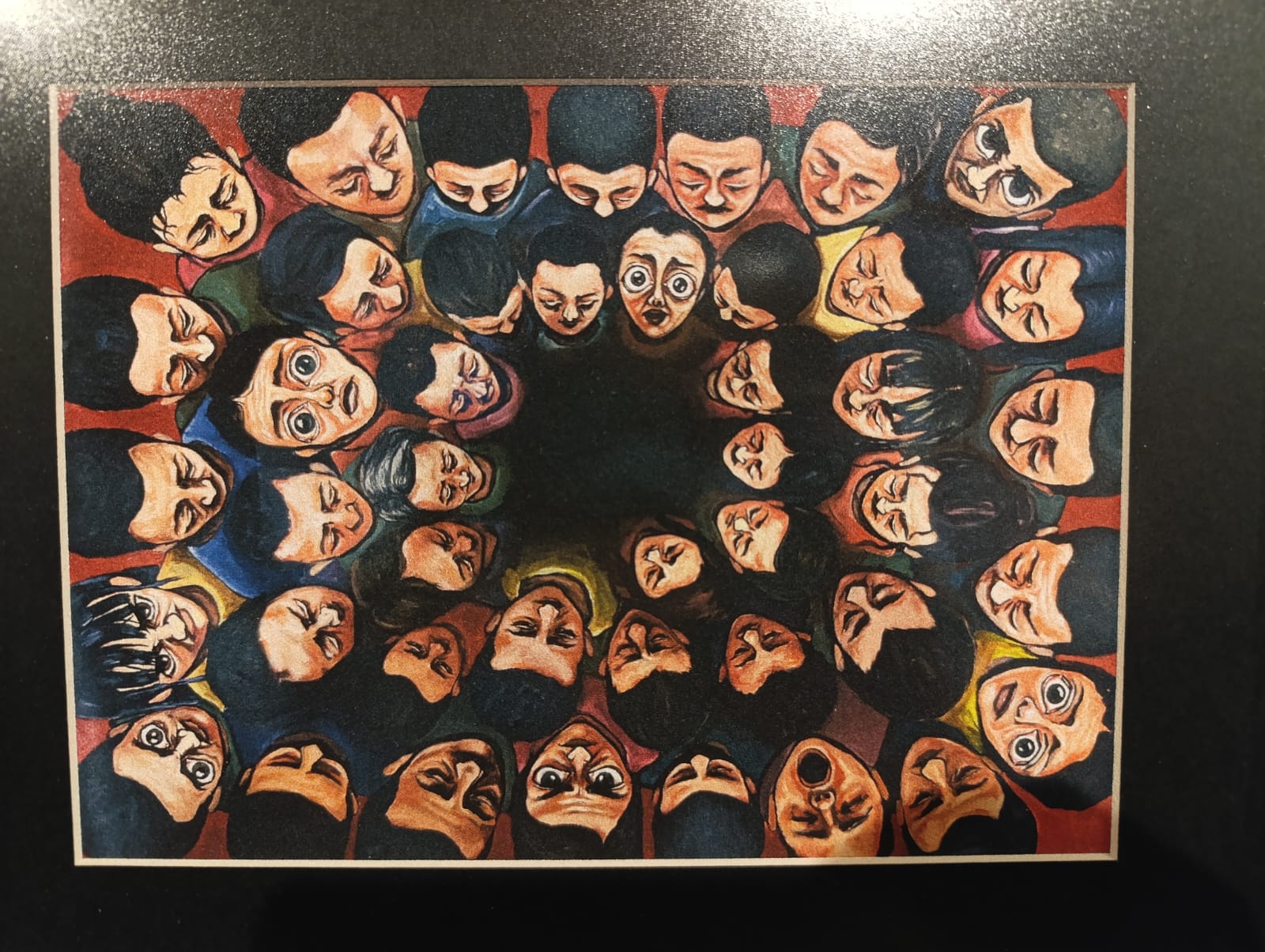
The Painter Who Says “Landscapes of My Homeland Palestine”
Among the artists who, under the title “In My Hand a Cloud”, reveal with their brushes the most profound struggles between truth and inner truth, are painters Motaz Naim and Alaa Al Shawa. Naim’s quasi “auto-realist” landscape triptych—The Mountains of the West Bank, The Town of Ein Karem, and The Olive Groves—embraces both the art-historical and dreamlike memory of the notion of “homeland.” At the same time, it delivers a deeply justified reminder to the uprooted human consciousness searching for a path between utopia and memory.
Similarly, Alaa Al Shawa’s expressionist double portrait carries the same psychological and visual tension. In it, the layered, existential manifestations of familial turmoil seem nearly impossible to escape.
Also on view is Silvina Der-Meguerditchian’s Necklaces I (2018), produced with an ancient visual aesthetic, half of whose proceeds go to support the Gaza Biennial. Within the exhibition, another striking poetic line appears under the title Difficult Exercise:
“In Gaza / breathing is a duty, / smiling / is cosmetic surgery / we perform upon our own faces, / and waking up in the morning / is to return from death / in order to survive one more day.”
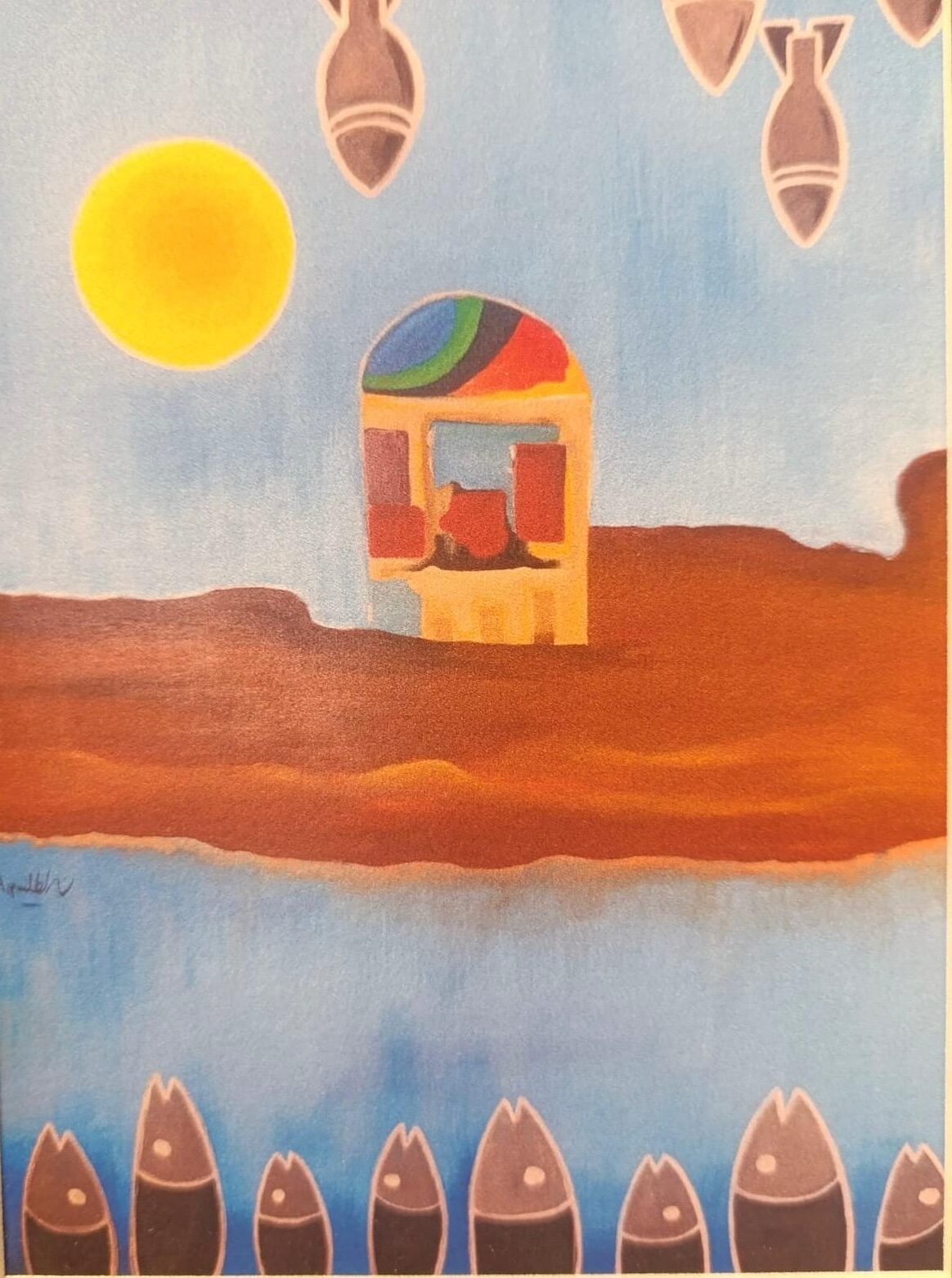
An Example from Shirin Neshat’s Women Without Men at the Biennial
Among the works enriching the Biennial is Shirin Neshat’s 2008 bridal composition from her Women Without Men series, Pari, presented within The Wall of the Waiting. Alongside it, a 2025 figurative expressionist painting titled Under Surveillance also drew attention. In this 100 x 100 cm acrylic on canvas by Hamada Elkept, a woman in a red keffiyeh gazes with Mona Lisa–like detachment, her presence encircled by surveillance cameras—a striking commentary on control and indifference. Another of Elkept’s works appears in The Wall of the Forty, depicting yet again a woman in a keffiyeh, this time overshadowed by a hovering drone of surveillance and attack.
Pain transformed into abstraction is powerfully present in Mohammad Suliman’s photographic triptych A View from the Ruins, executed with astonishing detail. Sharing this same drive toward abstraction, a cluster of artists—Morad Al Assar, Liza Madi, Essam Mkheimer, and Wafaa Alkhahlout—present bold canvases and photographic compositions within The Wall of the Forty, layering grief, devastation, and endurance.
On the Biennial’s second floor, the tension between “here” and “there,” across scales of time and space, reaches monumental form in Khaled Tanji’s large-scale installation Reconnecting. This living monument places viewers in direct dialogue with leading figures of the Palestinian struggle through a constellation of 25 video portraits housed in phone-booth-like wooden structures, supported by cathode televisions and three-color projectors. The portraits confront visitors with firsthand glimpses of the suffocating social and civic pressures currently experienced in Palestine, conveyed directly through the words and eyes of those who endure them.
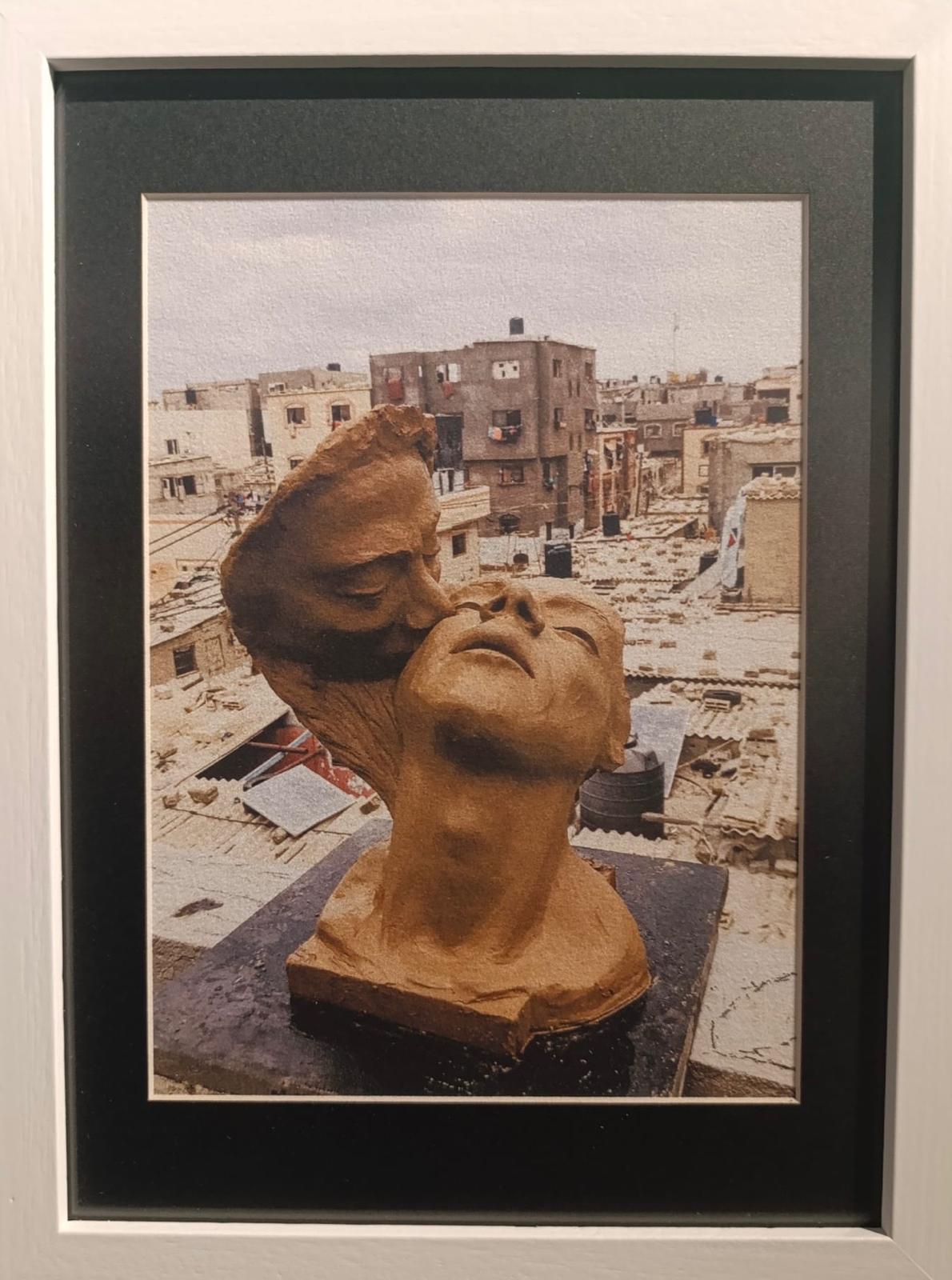
Alfredo Jaar and Maresh Ayas Carry the Exhibition to a Spiritual Crescendo
Among the artists contributing to the Biennial is Alfredo Jaar, who participates with a 2018 work that reads almost as a commentary on the present moment. His iconographic, optically charged piece asks: “When all of life causes tears, why should certain moments demand them more than others?” Jaar employs water-based paints printed on glass, set within a stainless-steel frame and illuminated with LED light. Donated to the Biennial and to Palestine, the work resonates as both a gift and a provocation.
Accompanying Jaar’s contribution is a marble figurative sculpture by Maresh Ayas. Likely depicting a young girl on the threshold of adolescence, Aslan is presented under a dramatic light: rubber slippers on her feet, a short skirt, her body split starkly down the middle. The work confronts the viewer with explosive immediacy, its fractured marble and cement mass underscoring a schizophrenic tension between existence and annihilation. At once monumental and broken, it delivers the unbearable coexistence of permanence and impermanence, reality and its contested doubles—leaving us witnesses to both presence and erasure.
Adding to this visual lament is painter Hamada Elkept, whose piece The Doves Have Lost Their Nests echoes the same dirge of dispossession.
With further testimonies unfolding across video, painting, and installation, the exhibition offers a rare and urgent experience. Running through the end of September and extending into October and November with numerous parallel events, the Biennial resounds with a collective declaration first voiced in 2024:
“No war can halt the dreams of dreamers; no mechanism of domination can extinguish the light within the hearts and minds of creators.”
Info: depoistanbul.net | taswir.org
Photos: Evrim Altuğ

